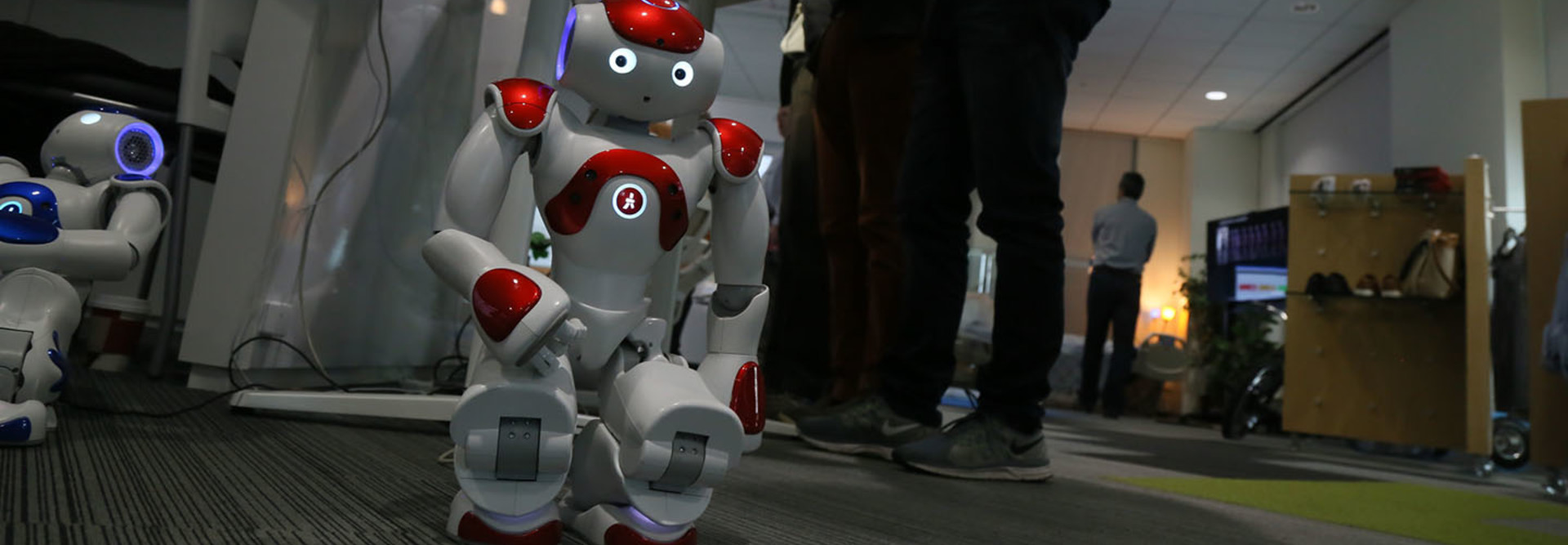Robots Are Elevating What’s Possible in Healthcare
Robots are entering the hospital room, surgery ward and doctor’s office at an increasing rate. Shipments of medical robotics used for surgery, rehabilitation and hospital tasks will triple over the next five years, with revenues jumping to $2.8 billion from $1.7 billion, a recent report from Tractica predicts.
While robotics already enhance procedures such as spine surgery, universities and healthcare technology companies alike are pushing the limits of what’s possible and developing ever more innovative ways to introduce robotics into the health field in coming years.
Robots Complement Caregiving for Seniors
With the United Nations projecting that the number of people over 60 will grow by 56 percent by 2030, robots could join efforts to improve senior care alongside wearables and smart technology that aim to provide independence and comfort to seniors aging at home.
IBM Research and Rice University recently announced that they were collaborating on a humanoid robot prototype, the Multi-Purpose Eldercare Robot Assistant (MERA), a Watson-enabled robot designed to aid the elderly and assist caregivers.
Over the course of the study, researchers will aim to program IBM MERA to use noninvasive ways of measuring an individual’s vital signs, such as using a video recordings to calculate heart rate, heart rate variability and respiratory rate. They will look to program text-to-speech capability that will allow MERA to answer basic health-related questions, and also program it to read the results of an accelerometer to determine whether or not an individual has fallen.
“Our new research on ‘embodied cognition,’ which combines real-time data generated by sensors with cognitive computing, will explore how to provide clinicians and caregivers with insights that could help them make better care decisions for their patients,” noted Arvind Krishna, senior vice president of IBM Research, in the press release.
The prototype — produced in partnership with students from Rice’s departments of Electrical and Computer Engineering and Psychology — is currently being hosted in IBM’s new “Aging in Place” environment. The environment aims create an atmosphere that mimics the types of interaction elderly people have in their homes, the company said in the press release.
The study aims to place the IBM MERA prototype in the environment and leverage the Internet of Things as well as other cognitive-powered technologies to “study how data from atmospheric, motion, audio and olfactory sensors could be used by the ecosystem of caregivers to potentially improve healthcare and wellness as physical or environmental conditions change.”
MRI-Friendly Robotics Ease Cancer Biopsies
Meanwhile, at Worcester Polytechnic Institute, researchers are at work developing robots that can take biopsies from cancer patients more effectively and efficiently, the school’s website reports.
Gregory Fischer, professor of mechanical engineering and robotics engineering and director of WPI’s Automation and Interventional Medicine Laboratory, is developing robots that can function inside of MRI scanners, which will allow doctors to perform biopsies guided by real-time images of the procedure. The biopsies are usually performed with images taken before the procedure, meaning changes may have occurred by the time the biopsy takes place.
The robot, jointly developed with Johns Hopkins University is currently in trials helping to take biopsies from prostate cancer patients at Brigham and Women’s Hospital in Boston.
Fischer and his team developed the MRI-compatible robot to steer and align the biopsy needle, which is inserted by the doctor. But the team is pushing toward a day when the robot can insert the needle on its own — performing the entire procedure from start to finish.
Surgical Robotics Make Retinal Surgery Possible
Researchers at the University of Leuven, in Belgium, have developed a surgical robot that can help a surgeon insert the needle precisely and then hold it perfectly still during injection, the university reported. Earlier this year, the robot was used to inject a drug directly into a vein in a patient’s eye that is as thin as a human hair, treating a condition known as retinal occlusion, or thrombosis, a blood clot in the eye that can lead to loss of vision and blindness.
Previously, monthly injections could not dissolve the blood clot but could only treat the symptoms. According to Professor Peter Stalmans, an eye surgeon at University Hospitals Leuven:
"The current treatment for retinal vein occlusion costs society 32,000 Euros per eye. This is a high price tag, considering that you're only treating the side effects and that there is little more you can do than avoid reducing eyesight. The robotic device finally enables us to treat the cause of the thrombosis in the retina. I look forward to what is next: if we succeed, we will literally be able to make blind people see again.”









